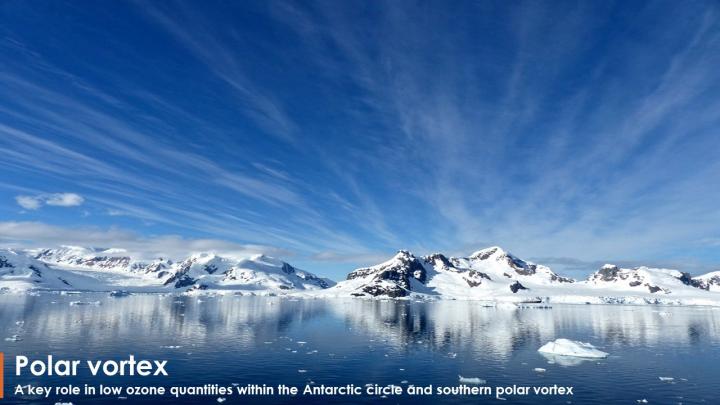
Credit: ZHOU Shu
The polar vortex is a large area of upper-atmosphere cyclonic air circulation surrounding both poles. It is bounded by the polar jet stream and its associated cold air is usually confined to the polar regions. Within the Antarctic circle, and southern polar vortex, ozone quantities are the lowest, globally. A research published in Advances in Atmospheric Sciences, led by Dr. LUO Yuhan, corresponding author and Associate Professor at the Hefei Institutes of Physical Science (HFIPS), suggests that the polar vortex plays a key role in Antarctic stratospheric ozone depletion.
“The atmosphere over Antarctica is controlled by a strong polar vortex in winter, making it difficult to exchange with the mid-latitude atmosphere.” said Dr. LUO. “The extremely low air temperatures (
Dr. LUO further explained that PSCs are primarily composed of nitrate trihydrate and water ice, along with smaller concentrations of other volatile compounds. These aerosols provide surfaces for heterogeneous reactions that convert halogen reservoirs to active halogens which cause severe ozone depletion.
The team used Zenith Scattered Light Differential Optical Absorption Spectroscopy (ZSL-DOAS) techniques to measure ozone depletion near the edge of the polar vortex at the Fildes Peninsula on King George Island (62.22S, 58.96W). ZSL-DOAS can accurately quantify the column density of ozone. The ozone columns were compared with the stratospheric ozone profiles from NASA’s MERRA2 ozone database and PV profiles from the ECMWF dataset, which helped better understand the causes of ozone depletion.
“PV is used to characterize the polar vortex and determine the edge of polar vortex by Nash’s criterion.” said QIAN Yuanyan, a PhD candidate working with Dr. Luo, and the first author of this paper. Nash’s criterion suggests that the vortex typically lies at or south of 65° equivalent latitude, based on PV values.
Results show that PV is positively correlated with total ozone columns, and both variables trend up and down at the same pace.
“The observations conducted in this study contribute to a base for further analysis to improve the prediction of the inter-annual variations of stratospheric ozone.” said Dr. LUO. “This will provide a better understanding of ozone recovery and stratosphere-troposphere exchange over the polar vortex edge area.”
###
Media Contact
ZHAO Weiwei
[email protected]
Original Source
http://english.
Related Journal Article
http://dx.




